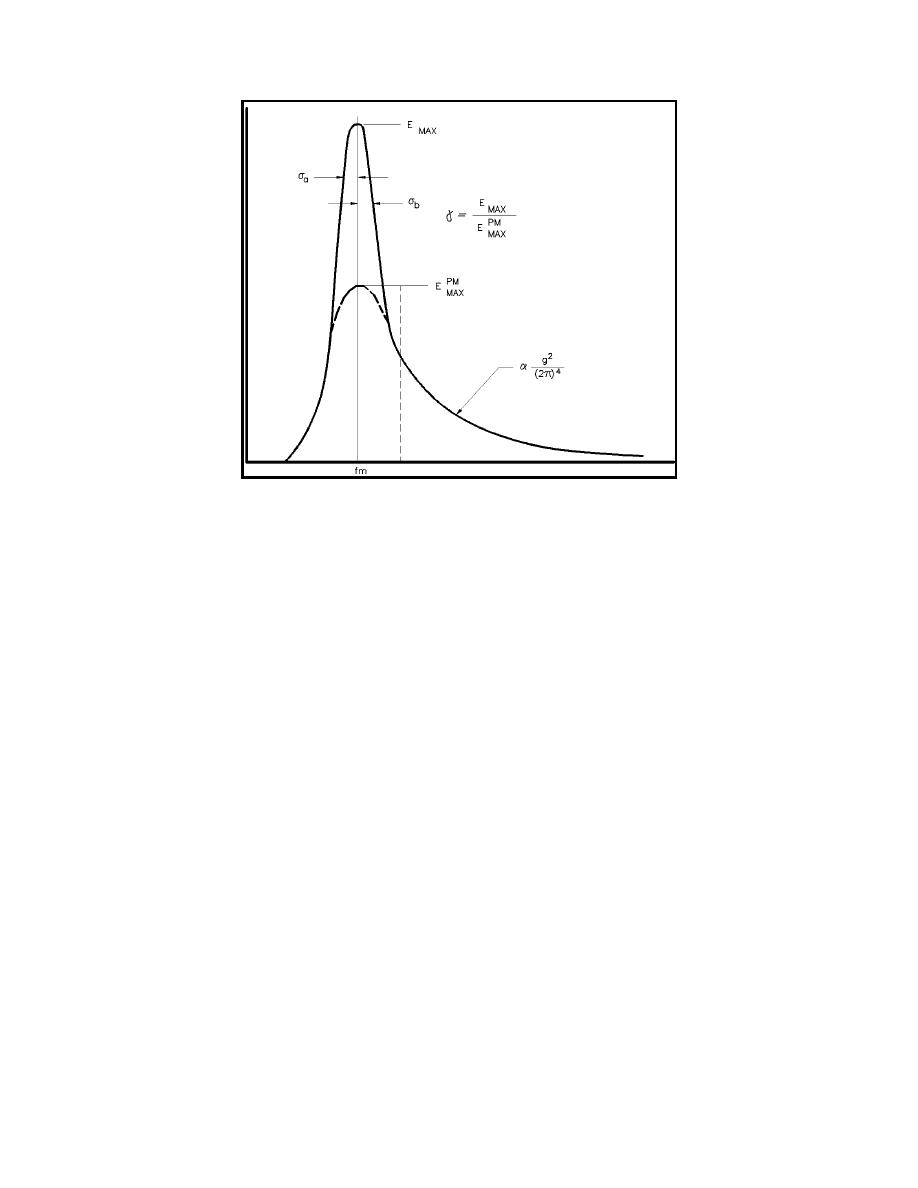
EM 1110-2-1100 (Part II)
(Change 1) 31 July 2003
Figure II-2-22. Definition of JONSWAP parameters for spectral
shape
(15) Part of the motivation to use third-generation models is related to the hope that future simulations
of directional spectra can be made more accurate via the direct solution of the detailed source-term balance.
This is expected to be particularly important in complex wave generation scenarios where second-generation
models might not be able to handle the general source term balance. However, recent research by Van
Vledder and Holthuisen (1993) has demonstrated rather convincingly that the "detailed balance" equations
in the WAM (WAMDI Group 1988)model at this time still cannot accurately simulate waves in rapidly
turning winds. Hence, there remains much work to be done in this area before the performance of third-
generation models can be considered totally satisfactory.
(16) First-generation models that have been modified to allow the Phillips equilibrium coefficient to vary
dynamically (Cardone 1992) , second-generation models (Resio 1981; NORSWAM, Hubertz 1992), and
third-generation models (Hasselmann et al. 1985) have all been shown to produce very good predictions and
hindcasts of wave conditions for a wide range of meteorological situations. These models are recommended
in developing wave conditions for design and planning situations having serious economic or safety
implications, and should be properly verified with local wave data, wherever feasible. This is not meant to
imply that wave models can supplant wave measurements, but rather that in most circumstances, these models
should be used instead of parametric models.
b. Wave prediction in simple situations. In some situations it is desirable to estimate wave conditions
for preliminary considerations in project designs or even for final design in cases where total project costs
are minimal. In the past, nomograms have played an important role in providing such wave information.
However, with today's proliferation of user-friendly computer software such as the ACES Program, reliance
on nomograms is discouraged. ACES will assist a user in his or her calculations, will facilitate most
applications, and will help avoid most potential pitfalls related to misuse of wave prediction schemes. In spite
of this warning and advice to use ACES, conventional prediction methods will be discussed here in order to
provide such information for appropriate applications.
Meteorology and Wave Climate
II-2-43


 Previous Page
Previous Page
